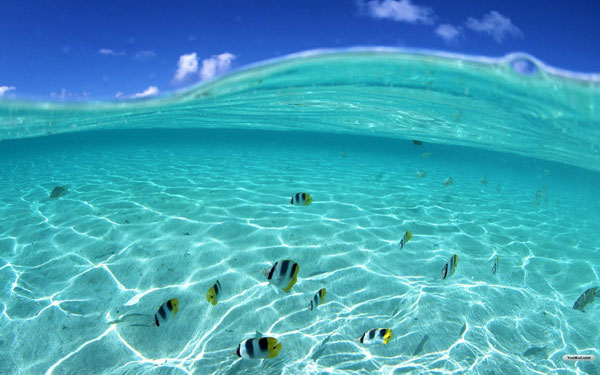A group of scientists says it has now reconstructed the history of the planet’s sea levels arcing back over some 3,000 years – leading it to conclude that the rate of increase experienced in the 20th century was “extremely likely” to have been faster than during nearly the entire period.
“We can say with 95 percent probability that the 20th-century rise was faster than any of the previous 27 centuries,” said Bob Kopp, a climate scientist at Rutgers University who led the research with nine colleagues from several U.S. and global universities. Kopp said it’s not that seas rose faster before that – they probably didn’t – but merely that the ability to say as much with the same level confidence declines.
The study was published Monday in the Proceedings of the National Academy of Sciences.
Seas rose about 14 centimeters (5.5 inches) from 1900 to 2000, the new study suggests, for a rate of 1.4 millimeters per year. The current rate, according to NASA, is 3.4 millimeters per year, suggesting that sea level rise is still accelerating.
Unsurprisingly, the study blames the anomalous 20th-century rise on global warming – and not just that. It also calculates that, had humans not been warming the planet, there’s very little chance that seas would have risen so much during the century, finding that instead of a 14 centimeter rise, we would have seen somewhere between a 3 centimeter fall and a 7 centimeter rise.
The new work is particularly significant because, in effect, the sea level analysis produces a so-called “hockey stick” graph – showing a long and relatively flat sea level “handle” for thousands of years, followed by a “blade” that turns sharply upwards in very recent times.
The discovery of such patterns itself has a long history, going back to a 1998 study by climate researcher Michael Mann of Penn State University and two colleagues – who found a “hockey stick” graph for the planet’s temperature, rather than for its sea level. Since then the “hockey stick,” in its various incarnations, has come in for voluminous criticism from skeptics and doubters of human-caused climate change – even as multiple scientists have continued to affirm the conclusion that the last 100 years or so are way out of whack with what the planet has seen in the past thousand or more.
The new research also forecasts that no matter how much carbon dioxide we emit, 21st-century sea level rise will still greatly outstrip what was seen in the 1900s. Nonetheless, choices made today could have a big impact. For a low emissions scenario, it finds that seas might only rise between 24 and 61 centimeters. In contrast, for a high emissions scenario – one that the recent Paris climate accord pledged the world to avert – they could rise as much as 52 to 131 centimeters, or, at the very high end, 4.29 feet.
However, Kopp notes that the methods used to project these totals may not fully capture what happens over the course of this century.
“We have a model that’s calibrated against a period when a certain set of processes, largely thermal expansion and glaciers, were dominant,” he says, “and we’re looking forward to a period when other factors will be dominant.”
As Kopp’s words acknowledge, the major contributors to sea level rise in the 20th century were the melting of mountain glaciers around the globe and the natural expansion of ocean water as it warms. However, in the 21st century, researchers think that the truly major players in potential sea level rise, the huge ice sheets of Greenland and Antarctica, will come to play a larger role.
The current study was based on combining a variety of so-called “reconstructions” of past rates of sea level from 24 locations around the world with more recent measurements from 66 global tide gauges.
That’s necessary because you can’t just measure sea level change in a single place and get a global picture – over long time periods, factors ranging from whether land is rising or sinking to changes in ocean currents and the gravitational pull of the planet’s ice sheets mean that different regions can see different amounts of sea level rise (or fall).
The new study follows in the footsteps of a 2011 study that looked at the ocean and climate records contained in salt marshes in North Carolina to infer the history of sea level rise over the past 2,100 years – research that had many of the same authors. That study, too, found that the recent sea level rise is unprecedented over that time period.
Mann of Penn State, one originator of the “hockey stick” reference and a co-author on the 2011 study (but not the current one), said by email that he thinks the current work is an “incremental advance” on that prior study, albeit one he agreed with in broad outline


